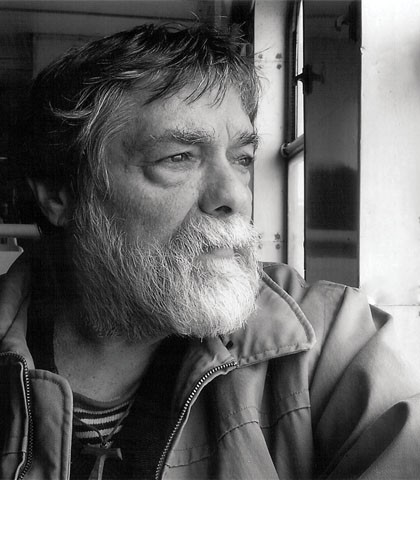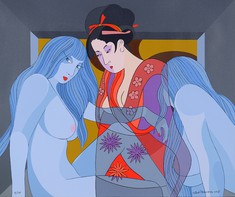
Silva Palmeira
I paint as I breathe, I love as I live
Silva Palmeira was born in 1934 in the city of Santarém and began his artistic activity in 1948. He completed his military service in India, where he participated in his first exhibition in Goa, in 1957. He followed the Portuguese Screen Printing Center from the beginning, where he edited around 40 different works, including the series Encantos da Linha de Fronteira and the screen printing with the most colors in the history of the CPS, O Carmo e a Trindade, 102 colors and four months of printing work. Silva Palmeira has received recognition from his partners in the projects he developed for screen printing, essentially addressing the landscape. The edition that justifies the cover of the magazine Art Winter 2018-19, highlights another theme that the artist has been focusing on since the 70s developing one of his most emblematic bodies of work, where he has dialogued with the beautiful Japanese erotic engravings of the 19th century. XVIII and century. XIX and developed a sensual poetics of transcultural matrix that he himself defines as “fusions or syncretisms”.
Most edits made with CPS reflect on the landscape, urban or rural. How important is this new edition?
The importance of this new edition is, for me, a relevant milestone as it has been the It is very much a movement and a message that reflects my experience in the travels I have done and in the entire study of the meaning of art as a philosophy of people.
What motivated you for this East-West dialogue?
I have always been motivated by the encounter of cultures. Japan in its ancient concept, in beauty and difference, inspired me to a new reality of poetic sensitivity.
What importance do you attribute to graphic work and the multiple in the context of your work?
The importance of graphic work and the multiple in my work is This is truly relevant and the CPS has always been the support for the recognition of my work in various sectors of the artistic world and in coexistence with people.
What would you like to convey to young collectors and lovers of your work?
I have an appeal to you. youth: to look at life with a meaning where art is It is a means for us to better understand society and make it richer in content and knowledge. I hope that my work can contribute in the slightest to this.
How does direct coexistence with art contribute to the improvement of contemporary society?
Graphic work has the ability to reach the connoisseur, and possible collector, as a first approach, as it is easier to acquire. And, culturally, broaden the taste for art, creating a more valuable society in sensitivity and contributing to a better world.
